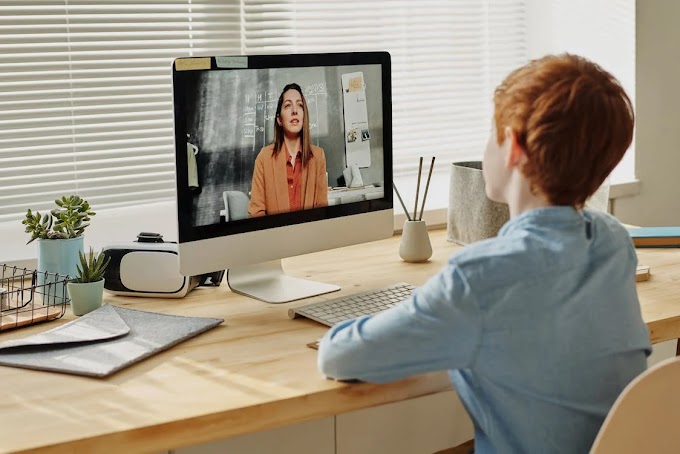Creating Stunning Video Overlays
In the world of video editing, compositing and layering are key techniques used to enhance the visual appeal and storytelling aspects of a project. Whether it's creating stunning picture-in-picture effects, overlaying text, or combining multiple video clips into one seamless masterpiece, compositing allows for creativity and flexibility. One of the most accessible tools for this is MoviePy, a Python-based library that offers an intuitive way to work with video editing and manipulation.
In this blog post, we’ll explore how to use MoviePy for layering and compositing video clips, helping you create professional-looking video overlays and compositions without needing expensive software or complex workflows.
What is Compositing and Layering?
Before we dive into the code, let’s quickly define compositing and layering:
- Compositing refers to the process of combining multiple video clips (or images) into a single final output. This can include effects like transparency, fades, or color corrections, and is essential for creating complex video compositions.
- Layering is the technique of stacking multiple video clips or images on top of one another, where the order of the clips determines which one appears on top. The clip on the top layer will cover the clip on the bottom layer unless transparency or blending effects are used.
MoviePy allows you to handle both compositing and layering efficiently, making it a perfect tool for creating video overlays.
Basic Layering of Clips
Let’s start by layering two video clips on top of each other. In MoviePy, this can be done using the CompositeVideoClip class, which combines multiple video clips into one.
Here’s a simple example where we layer one video on top of another:
from moviepy.editor import VideoFileClip, CompositeVideoClip
# Load two video clips
clip1 = VideoFileClip("background_video.mp4")
clip2 = VideoFileClip("overlay_video.mp4")
# Resize the second clip (if necessary) and position it on top of the first
clip2 = clip2.resize(height=200).set_position(("right", "bottom"))
# Composite the two clips together
final_clip = CompositeVideoClip([clip1, clip2])
# Write the result to a file
final_clip.write_videofile("output_video.mp4", codec="libx264")
In this example:
clip1is the background video.clip2is the video overlay.- The overlay video is resized and positioned in the bottom right corner of the screen.
- Finally, the clips are combined using
CompositeVideoClip, which stacks the clips according to their order in the list.
Picture-in-Picture (PiP) Effect
One of the most common compositing effects is the picture-in-picture (PiP) effect, where a small video is overlaid on top of a larger background video. This is an excellent way to show reactions, gameplay, or a talking head alongside other content.
Here's an example of how to create a PiP effect:
from moviepy.editor import VideoFileClip, CompositeVideoClip
# Load the background video and the overlay video (e.g., a webcam recording)
background = VideoFileClip("main_video.mp4")
overlay = VideoFileClip("webcam_video.mp4")
# Resize the overlay video and position it in the top-right corner
overlay = overlay.resize(height=150).set_position(("right", "top"))
# Create the final composite video
final_video = CompositeVideoClip([background, overlay])
# Export the final result
final_video.write_videofile("output_with_pip.mp4", codec="libx264")
In this example:
- The main video (
background) serves as the primary content. - The overlay video (
overlay) is resized to a smaller size and placed in the top-right corner. - The
CompositeVideoClipcombines both clips, resulting in a PiP effect.
Advanced Layering with Transparency
Sometimes, you may want to create more complex compositions, like text overlays, logos, or even transparent video elements. MoviePy allows you to work with clips that have transparency (alpha channels). For example, you can overlay a logo with transparency over a video.
Here’s how you can do that:
from moviepy.editor import VideoFileClip, ImageClip, CompositeVideoClip
# Load the background video
background_video = VideoFileClip("background_video.mp4")
# Load the transparent logo
logo = ImageClip("logo.png", transparent=True)
# Set the logo's position and duration to match the video
logo = logo.set_duration(background_video.duration).set_position(("center", "top"))
# Composite the background video with the transparent logo
final_composite = CompositeVideoClip([background_video, logo])
# Export the final result
final_composite.write_videofile("output_with_logo.mp4", codec="libx264")
In this case:
- The
ImageClipis used to load a PNG file with transparency (the logo). - The logo is positioned at the top center of the video and set to last as long as the video itself.
CompositeVideoClipis then used to combine the background and the transparent logo into a single video.
Creating Complex Compositions with Multiple Layers
MoviePy’s CompositeVideoClip allows for more than just two layers. You can stack multiple clips to create complex compositions. For example, you can add multiple PiP effects, text overlays, animations, and much more.
Here’s how you can create a multi-layered composition with different effects:
from moviepy.editor import VideoFileClip, TextClip, CompositeVideoClip
# Load the background video
background = VideoFileClip("background_video.mp4")
# Load an overlay video
overlay = VideoFileClip("overlay_video.mp4")
# Create a text clip
text = TextClip("Hello, World!", fontsize=70, color='white', bg_color='black')
# Set text duration, position, and size
text = text.set_duration(background.duration).set_position(("center", "bottom"))
# Resize the overlay video
overlay = overlay.resize(height=150).set_position(("left", "top"))
# Combine the clips into a composite
final_video = CompositeVideoClip([background, overlay, text])
# Write the final output
final_video.write_videofile("multi_layer_composite.mp4", codec="libx264")
In this example:
- We have three layers: the background video, the overlay video, and a text overlay.
- The text is placed at the bottom center and is visible throughout the video.
- The overlay video is placed in the top-left corner.
- All layers are combined into one video using
CompositeVideoClip.
Conclusion
Layering and compositing clips in MoviePy open up a world of creative possibilities for video editors. Whether you’re looking to add picture-in-picture effects, overlay logos, or create multi-layered compositions, MoviePy makes the process accessible and flexible. With just a few lines of Python code, you can take your video projects to the next level, achieving professional results without the need for complex software.






0 Comments